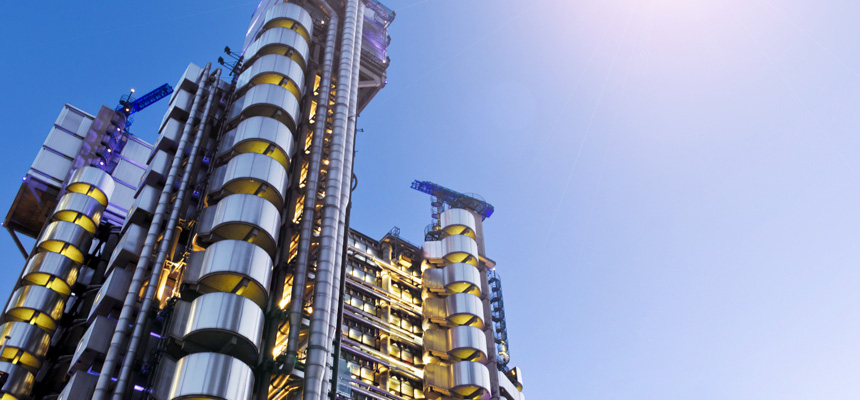
Tuesday, January 22, 2019
What I Learned in the Birthplace of Underwriting
By Mark Lawrence
Most people in insurance are familiar with Lloyd’s of London, which started in 1686 in London, England, at Lloyd’s Coffee House, a venue popular with sailors, merchants and ship owners. Lloyd’s originally provided shipping news, but it became an ideal place to obtain marine insurance for ship owners interested in pooling their losses so the impact of losing one ship would be spread across the entire group.
Since then, Lloyd’s has moved from that coffee shop to its current location at One Lime Street. It’s a distinctive building, which, depending on your viewpoint, is beautiful or hideous. The business also now has billions of dollars of corporate capital backing the Syndicates that make up the London market.
So, wait… how does this tie to me? Well, I started my career at Crown Life Insurance Company as a group medical underwriter. I later moved to their Special Risk Reinsurance department, which handled one particularly interesting (and risky) type of insurance – the London Market Excess of Loss (LMX), where we provided reinsurance covers to various Lloyd’s Syndicates for their Accident & Health business.
To help me better understand what I was underwriting, a reinsurance broker arranged a trip to London for me in the spring of 1997 where I sat in a “box” at Lloyd’s with an underwriter we reinsured. The “boxes” (picture four good-sized dining room tables arranged in a rectangle) are each owned or run by a Syndicate and have chairs for the underwriters in each of the classes of business they underwrite. It soon became clear that the set-up laid the foundation for the process.
My host was the underwriter for Accident & Health business. On the other side of him were two people he introduced as brokers. The first of them sat down with a stack of papers and started going through his risks – one by one. He had slips and binders for disability insurance for various European soccer players. My host’s tools were a binder that contained rate tables, a calculator, a stamp, an ink pad and a fountain pen.
As the underwriter reviewed each risk, he checked the rates and commissions and then stamped, signed and dated the slips and binders. While that was going on, he made small talk with me, the broker and some of his fellow underwriters. At one point, he found an error in the rate on one of the slips that a client had already signed. He took out his calculator and punched away furiously. Then he pulled out his pen, cut the broker commission by 2/3 and stamped and signed the slip. When the broker began to protest, he simply said, “The rating error was yours and not mine,” and then he handed the slip to the silent, red-faced broker.
A little more than an hour later, we had finished going through the first stack of risks. The broker left, and the next one sat down. During the time we were working, a fairly significant line started to form (about six or seven brokers), and then the broker who arranged my visit showed up and reminded us that we had a lunch reservation. My host opened a drawer, pulled out a sticky note and handed it to the next broker in line. The note said: We’re going for lunch. Place your name here, and the queue will re-form at 2 p.m. With that, he got up and walked out. The waiting brokers were clearly bound to the underwriters’ schedules. We returned to the box at about 2:15 p.m. in a condition I can only call sub-optimal for decision-making, but that’s a different story.
So what did I learn from this experience? I learned that the Lloyd’s underwriters were very impressive, particularly in their depth and breadth of knowledge and ability to make decisions. But it also was a completely different environment in terms of assessing risk. Significant weight was put on the decisions of the underwriters who had previously stamped the slip, as well as on the broker involved. There was not much original analysis going on (at least during my brief visit). And, the brokers were, in all honesty, treated rather shabbily.
Twenty-two years later, underwriting is different. At HM Insurance Group, we have the tools needed to develop sophisticated analysis and pricing solutions for each risk. Our underwriters develop custom approaches to protect our clients’ finances and manage their risk, based on their individual needs, and each underwriter is assigned a program or regional office, working closely with those sales teams to understand the specific needs of the markets they are serving.
We work quickly and independently without relying on the analysis of our competitors, and as a direct writer, we control all aspects our business process , all while providing direct access to decision-makers to ensure we are doing what we said we would do.
And, thanks to our experienced, professional sales team, we have different (and much better) relationships with our broker partners.
Why HM
A strong, experienced carrier, HM responds to market changes and works with clients to ensure their coverage needs are met through expert risk assessment and exceptional delivery of benefits.





